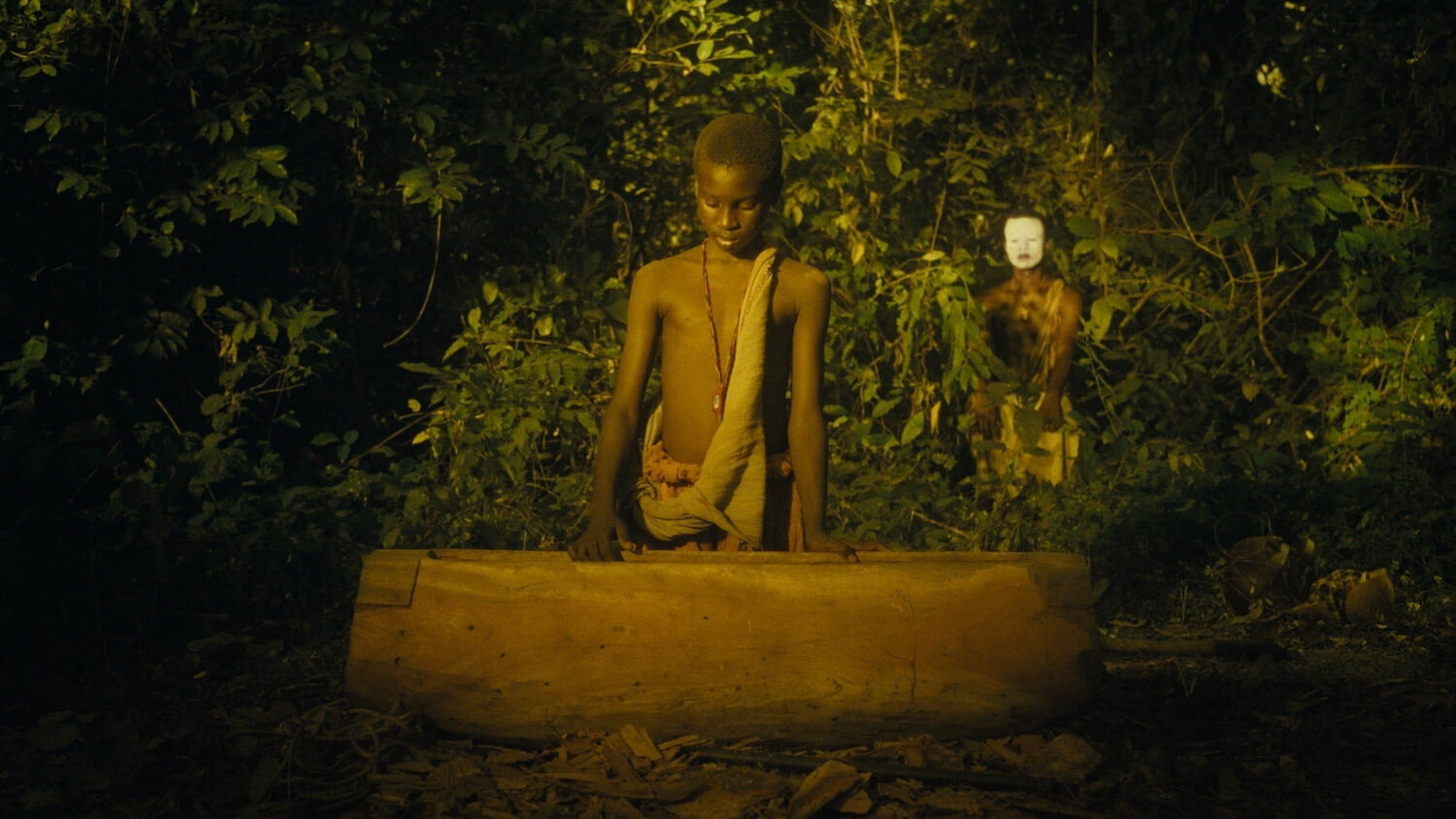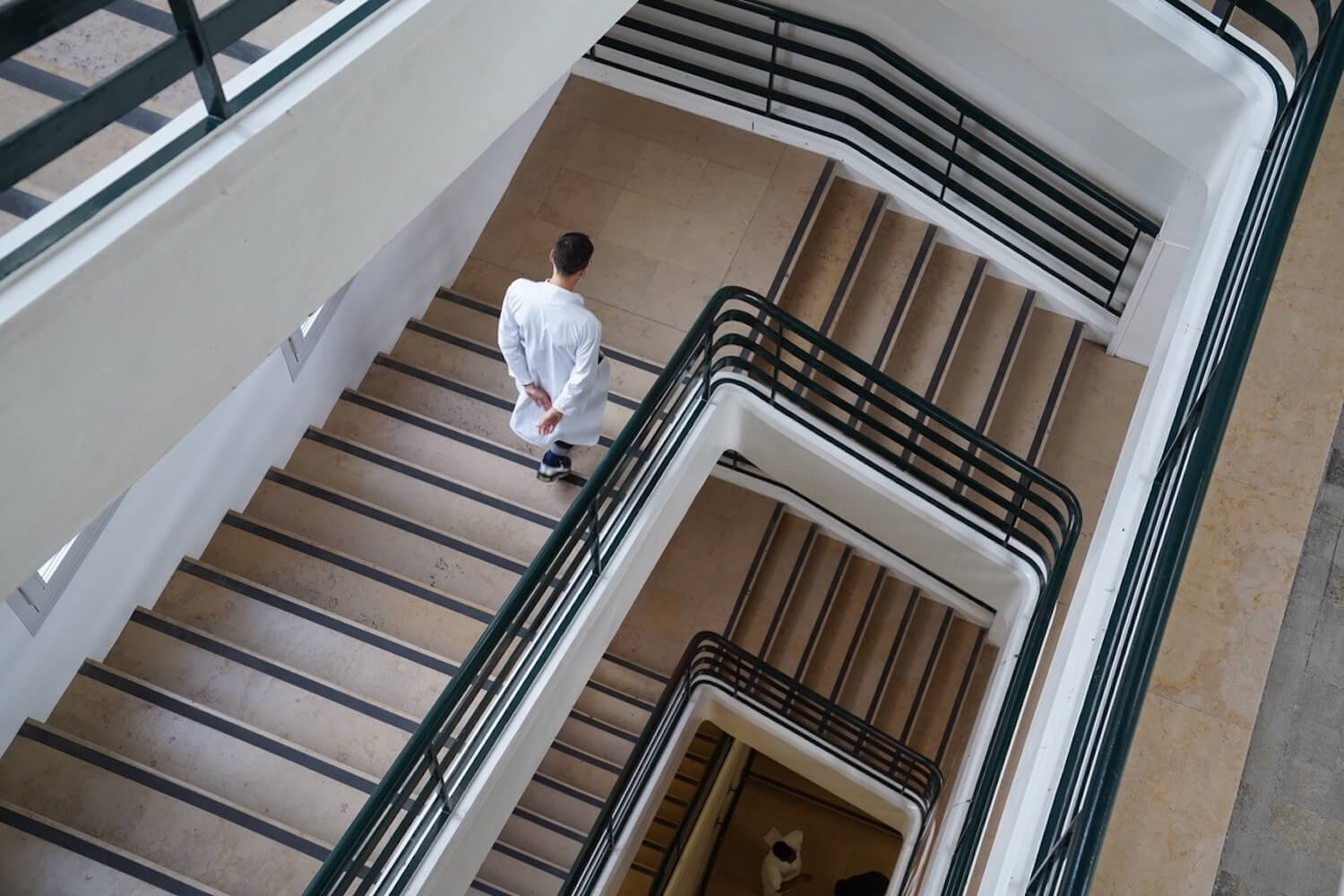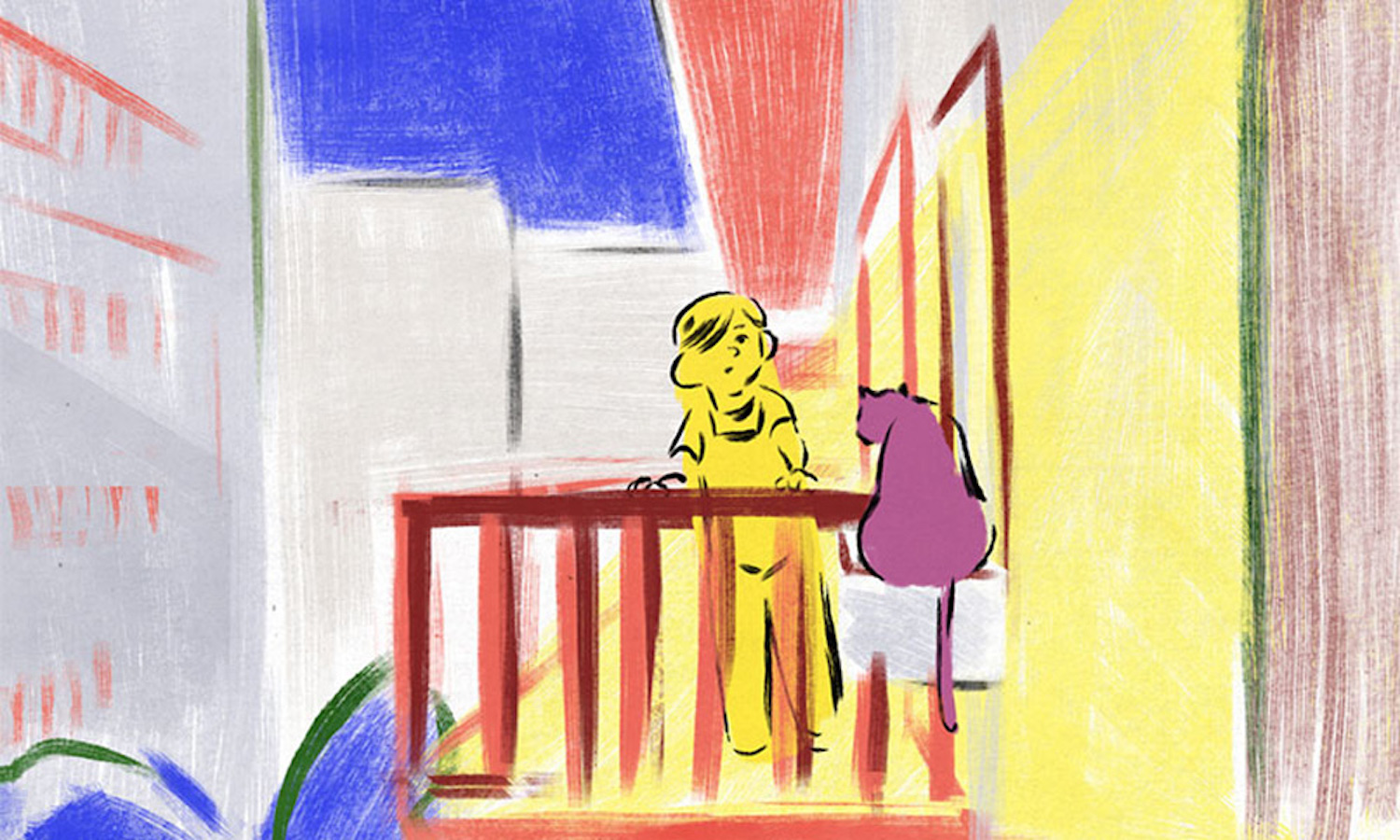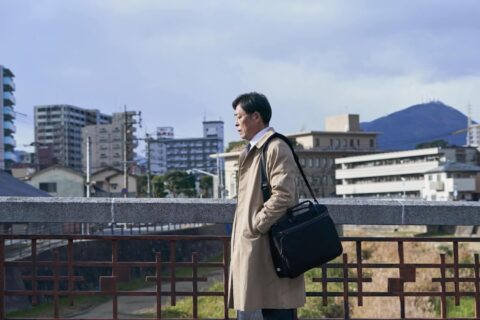Cannes is so big, the parallel programmes appear to have parallel programmes. Alongside the main festival — encompassing the Competition, Un Certain Regard, Out of Competition and Special Screenings — there’s, of course, Semaine de la Critique (Critic’s Week), created in 1962 to showcase first and second-time directors. Then there is also Quinzaine des cinéastes (Directors’ Fortnight), founded in 1969 after the festival was shut down by the seismic events of May 1968.
And then there’s ACID.
Formed in 1993 by the Association for the Distribution of Independent Cinema, it’s “based on a simple guiding principle: as filmmakers ourselves, which films do we wish to support and accompany to the audience?” Picking independent films without distribution and looking to support their journey across future festivals and a potential cinematic release, ACID may boast more films (nine) than Critic’s Week’s lean seven, and less cultural cachet than the similarly-minded Directors’ Fortnight, but it’s still an essential part of the overall Cannes infrastructure.
Critics, dazzled by the big names in competition and frazzled by the sun and the queues, are prone to overlook smaller parallel sections. I include myself in this distinction, barely registering ACID on my radar during my sole Cannes venture in 2018 — confused by my yellow badge, waiting endlessly to watch nonsense like Solo: A Star Wars Story (Ron Howard, 2018), trying to cut costs by living solely on paninis. (Even more egregiously, I have yet to attend a single screening at Berlin Critic’s Week, despite having attended the festival for over nine years.)
My micro-dose of this section — bittersweetly watching from afar, wondering how I’d ever get the money to walk the Croisette once again — reveals ACID to be, for the most part, a serious-minded, thought-provoking, highly-exciting section; the six films I saw, spanning three documentaries and three fiction features across a whopping four continents, united in exploring the eternal search for happiness — how dreams can be reached towards, manifested, distorted and manipulated, the precious individual coming up against the coldness of institutions, social norms and the epic tides of history.
Suitably for its marginal status at the festival itself and the independent nature of its films, this year’s ACID celebrates smaller voices and perspectives often overlooked in a cinematic climate filled with over-budgeted extravaganzas, wise-cracking superheroes and tired movie stars going through the motions. Let’s crack on.

Just A Small Town Girl
Some places have names that make you wish you were elsewhere. Take, for instance, Madrid, New Mexico. With an emphasis on the first syllable (MA-drid as opposed to MAH-drid), this sleepy desert town evokes the trendy capital of Spain while radiating classic Americana. It’s what bi-coastal elites call a flyover town; I expected Poker Face’s (Rian Johnson, 2023-) Natasha Lyonne to start turning up and solving crimes at any moment.
Caiti Lord, the star of Justine Harbonnier’s debut feature Caiti Blues (2023, above), is from New York — she ended up in Madrid on the way to San Fransisco. She’s 29 years old. She has $36,000 in student debt. She waits tables at the local Mine Shaft Tavern, formerly the “gem of the mining district”. The average pay before tips is four dollars an hour. Neither living in absolute poverty, nor poised for instant fame, her modest life is not the type that gets made into a movie. Caiti Blues is evidence more stories like hers should.
With remarkable sensitivity, artistry and a subtle eye for the profound, Harbonnier spends several months shadowing Caiti, serving customers, walking her dog in the nearby countryside, observing the shadows shortening and lengthening in the sun, smoking cigarettes on her break, playing with her ukulele and hosting her community radio show. Keenly-felt digital images are deepened by melancholic voiceover and VHS footage of a younger Caiti back on the East Coast; her penchant for musical theatre, consciousness about her weight, failed attempts at opera singing success.
Growing up in the aftermath of 9/11 — the defining cultural event of the American 21st century — the paranoia, tightening of wages, scarcity of opportunities and general meanness of the ruling class have led people like Caiti adrift, searching for community and meaning in an unlikely place. Counter to the culture war narrative, The Mine Shaft Tavern even has a queer streak, hosting drag events, including the He-She Bang, well-attended by everyone in the community.
Following Caiti so closely, lovingly using the camera to zoom in on the smallest of micro-expressions, Harbonnier gets intense mileage out of her preparation for the event, a moment of musical transcendence that suggests a ticket out of purgatory. An even smarter trick is the use of interstitial text, first appearing as pretentious adornment before later revealing forming the lyrics to Caiti’s original songs. The good news; the tracks are great! Watching a real person pull themselves out of the shit makes for remarkably good Kino.

A Contemporary Ikiru
Caiti’s journey might at first feel like her end. She feels like this at times as the intensity of youth can make everything feel like your last ever chance. But there’s never a shortage of chances to waste your life. Over and over and over again.
Mr Suenaga (Ken Mitsuishi) certainly rues the lost opportunities. On paper, everything looks fine. He is the vice-principal at a respected school. He has a wife and a daughter. He is well-known around town. He even has an adorable Shiba named Kotaro. But a quick visit to the doctor reveals he has only a few months to live.
With shades of classic Ikiru (Akira Kurosawa, 1953), both in the subject matter and the ways in which Japanese men of a certain age prefer not to address difficult topics directly, Dreaming in Between (Ryutaro Ninomiya, 2023, feature and above) follows Mr Suenaga as he takes stock, attempts to reconnect with his family, reassesses his forty years in teaching and vainly relives his youth.
With over 200 roles in film and television, veteran actor Ken Mitsuishi (Audition, Shin Godzilla, The Pillow Book) brings a truly lived-in and complex three-dimensionality to the role. For example, when asked if he’s okay at a restaurant, he replies: “Define ‘Okay.’” In the hands of a lesser actor, these lines seem trivial. With Mitsuishi in front of the camera, the melancholy has an immensity to it; burying years of discontent behind an otherwise cheery demeanour.
This is a man who lacks the tools to express how he truly feels, easily able to change difficult conversations and make cringy jokes, but incapable of confronting reality head-on. With his own father unresponsive and vegetating in an old person’s home, he lacks any kind of authority in effecting real change. Unlike in Kurosawa’s classic, there’s no playground at the end of this one. He’s also much less of a saint, prone to starting uncomfortable, patronising conversations with women and making jokey insults that come across as plain mean. This makes him achingly human, and perhaps a touch more relatable. The stoicism of the previous generation might be gone, but the suffering stays the same.

Fish For the Bride
Fish have an interesting symbolism in Tunisian wedding culture. The bride should step over a fish several times. Female wedding singers, known as Machtat, bang Darbouka and Mizwad drums in a steady 2/4 rhythm and sing in call and response for the evil eye to spare the married couple. Later they praise Allah as they announce a steady stream of dinars from loved ones.
Machtat (Sonia Ben Slama, 2023, above) follows one family, Fatma and her two daughters, Waffeh and Najeh, as they sing beautiful, passionate, spirited and rhythmically complex songs of pure love while their own lives are bogged down by everyday reality. Slama’s fly-on-the-wall approach has a great knack for distinguishing the differences between beautiful brides — magnificent wedding dresses, perfectly-permed hair, henna tattoos — and everyday domestic life; the coffee boiling on the stove, unruly kids, hanging the laundry out to dry.
Weddings might be temporary. They might even be fiction. Men in this film are barely seen, glimpsed out of the frame. But Najeh still has hope. She even has a potential suitor. In a phone call where she’s blushing like a school girl, the divorced mother of two, is plainspoken and heartfelt, telling her potential beau: “Maybe I’m just looking for happiness like you.” But happiness is a fickle thing, especially in a highly patriarchal world. A closer look at the women getting married certainly shows some kind of happiness, but what are they really showing us? Immense pressure, being put on a pedestal, dressed up like beauty queens. Is this what women really want?
Finding a way to tie the drama to the music itself — constantly pulsating, always vividly alive — Machtat thrillingly complicates that question.

Out of the Colonial Fire, Into the Post-Colonial Frying Pan
Nome (Sana Na N’hada, 2023, above) is a film over 50 years in the making. In the late 60s, revolutionary Bissau-Guinean Marxist leader Amílcar Cabral sent filmmakers Sana na N’Hada, Flora Gomes, Josefina Lopes Crato and José Bolama to Cuba. To help change international public opinion against the Portuguese colonial regime, they returned to the country to document the struggle. This archive footage forms the basis for the fiction Nome, N’hada following its eponymous character as he joins the resistance movement.
In the way it creates a larger apparatus around a smaller film, I was reminded of Aurora’s Sunrise (Inna Sahakyan, 2022). A similar mixture of archival footage occurs at key moments, most notably when firefights occur. Naturally, it saves money on costly sequences, but it also reminds us that these things actually occurred, illuminating a fascinating part of West African history.
It starts in 1969, with our hero (Marcelino António Ingira), whose name means “all of us”, in love with the beautiful Nambù (Binete Undonque). He approaches her village boudoir late at night and invites her to watch the stars. Then in a remarkably gorgeous sequence, we watch a slide show of constellations; sex has rarely seemed so imaginative.
She’s instantly pregnant. Instead of dealing with the consequences, Nome runs away to join the resistance, turning from a fresh-faced ingenue to one of the liberation army’s key fighters. A spectral figure, his face covered in white paint, narrates his story, acting as both a Greek chorus and a voice of truth. Nome’s struggle is paired with Nambù dealing with the consequences of being left behind and that of a young boy in the woods, often caught in a distorted lens, making a drum out of a tree — showing the traditional culture lost in the midst of occupation.
Perhaps Cabral, had he lived to see this movie (assassinated in 1973), would be disappointed, as Na N’hada, returning to one of his first filmmaking projects, complicates a simple resister narrative into a more complex tale of post-colonial legacy and the true cost of war. Things get particularly messy when the occupation is over, colonial occupation giving way to corruption and petty gangsterism on the streets of Bissau, issues that have plagued the country until this day. Independence, it seems, is just the start.

The Good Doctor
The opening suggests a Safdie movie. Rushed doctors walking purposefully through halls. Police standing in doorways. A Chopin melody with an added electro kick drum accompanying handheld mayhem; a harried nurse with a power sign tattoo on his neck. But the rest is closer to Claire Simon, a rigorous exploration of good people being sadly down by the inadequacy of public institutions.
Our hero in On The Edge (Nicolas Peduzzi, 2023, above) is the amazing psychiatrist Dr Jamal Abdul-Kader, working at the Beaujon Public Hospital on the outskirts of Paris. It is a mental health facility for the most vulnerable people in French society. His job is to talk to patients, understand their concerns and liaison with the authorities. In a telling early scene, he warns the police to go easy on a patient, saying their presence only makes the situation worse.
He was born for this job. Quite literally. His parents were both Syrian doctors who moved to France to improve their practice. He grew up in a boarding house, a euphemism for a block of rooms directly above a hospital. Day in, day out, we observe him as he tirelessly battles burnout and institutional failure to be a voice of calm for his patients.
He listens. He buys them cigarettes. He tells them things they don’t want to hear. He reads their medical record, he prescribes drugs. In scene after scene with people in the midst of mental breakdowns, in the aftermath of suicide attempts, battling immense pain or addiction, Dr Abdul-Kader is a remarkable person, steadfast in his commitment to his patients.
And he’s very intellectual in a classically French kind of way, so his practice is rooted in the politics and philosophy of inclusion, laying the blame for many of the issues he encounters on the wider world around him. It’s simply fascinating to watch.
And when there are things that Peduzzi chooses not to depict, we switch to a series of stark black-and-white photos, imbuing Kader’s work with a grandeur and gravitas otherwise unable to be captured in the moment.
If it all seems a bit too like a yearly news segment on your local hero, a counter-narrative emerges around the neglected nurse and his intern, featuring uncomfortable conversations on who we focus on and when. And there are the patients who get away; who simply don’t get better. Sometimes it’s one of those things. Sometimes it’s a question of institutional failure. Sadly, all the good doctors in the world won’t make a difference when the core, systematic issues of funding remain. By avoiding sentimental hero worship, On The Edge nervously, angrily captures a system on the brink of collapse.

Chicken Run
In ACID opener, Chicken for Linda! (Sébastien Laudenbach, Chiara Malta, 2023, above), the stakes couldn’t be lower. After being punished by her mother Paulette (Clotilde Hesme) for a crime she didn’t commit, Linda (Mélinée Leclerc) is allowed to request whatever she wants. Her ultimate dream: chicken with peppers.
In most places, on most days, finding a chicken and some peppers is pretty simple. But Linda has the misfortune of choosing a strike day… in France! This sets the duo off on a zany journey to source the perfect chicken, roping in the cops, fellow neighbors, an aggrieved sister and various naughty children. Starting off small before slowly growing in charm and silliness, it’s a mostly delightful, if rather slight, animation — its thematic simplicity echoed by a bright, hand-drawn style, liberal use of color and upbeat music.
With little of the otherworldly/supernatural touches, or any threat of the world ending, found in big-budget animation, Chicken for Linda! deserves credit for finding magic in the quotidian while mixing in musical sequences and zany chases. Zipping along nicely, and clocking under 75 minutes, it’s more-or-less one for the kiddos; especially as Linda’s (and her mother’s) motivation is criminally underwritten. Animation need not be shamelessly manipulative, a la Pixar, but Chicken for Linda!, self-satisfied by its quietly whimsical pace, didn’t impress much emotion on me at all. I was left amused, but unmoved. Put some paprika in those peppers!
Redmond is the editor-in-chief of Journey Into Cinema.
